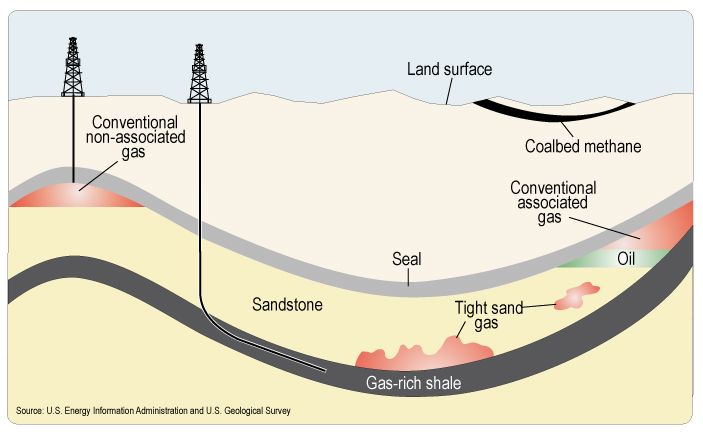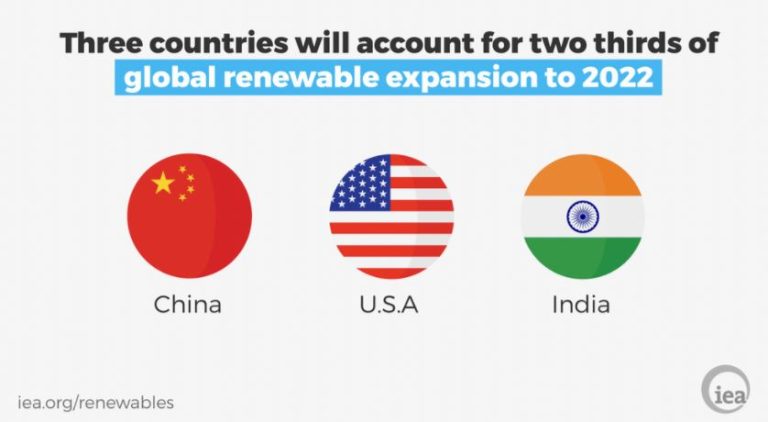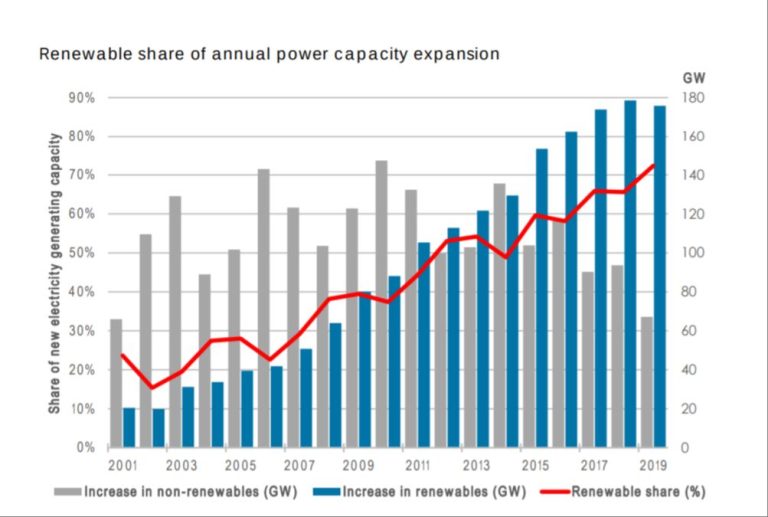Why Is Natural Gas Non-Renewable?
Definition of Non-Renewable Resources
Non-renewable resources are materials and energy sources that cannot be easily replenished in nature. Once these resources are extracted and consumed, their quantities are depleted and cannot be restored on human timescales.
The most notable examples of non-renewable resources include:
- Fossil fuels like oil, natural gas, and coal
- Nuclear fuels like uranium and plutonium
- Metals like gold, silver, copper, and aluminum
These resources originate from geological processes that can take millions of years. Their finite supplies and slow regeneration mean they cannot keep pace with current rates of human consumption and depletion.
How Natural Gas Formed
Natural gas formed deep underground from the remains of plants and animals that lived millions of years ago. When these organic materials died, they sank to the bottom of marshes and seas, accumulating in thick organic-rich mud. Over time, the mud was buried by more sediment and slowly transformed into rock formations known as source rocks.
As the source rocks were buried deeper, they were exposed to higher temperatures. This caused the organic matter to break down through a process known as thermal maturation, releasing hydrocarbons like natural gas. The natural gas migrated upward through tiny pores in the source rock until it became trapped beneath impermeable cap rocks. Over millions of years, large accumulations of natural gas formed in these underground traps.
The key factors in natural gas formation are:
- An abundance of plankton and plant matter that accumulated in ancient seas and swamps
- Gradual burial of organic-rich muds under layers of impermeable sediment
- High pressure and temperatures deep underground causing the thermal decomposition of organic matter into natural gas
- Gas migrating upward and becoming trapped beneath cap rocks
This geological process took place over millions of years, slowly cooking organic matter into natural gas deposits under specific temperature and pressure conditions underground.
Limited Supply
Natural gas is a finite resource, meaning that the world’s proven reserves are limited and non-renewable on human timescales. According to estimates, the total proven natural gas reserves worldwide are about 7,575 trillion cubic feet. At current global consumption rates of about 127 trillion cubic feet per year, this means there is enough natural gas to last around 60 years.
However, as natural gas continues to gain popularity and consumption rises, especially in developing countries, reserves may deplete faster than projected. Most experts believe natural gas production will peak between 2040 and 2050 as accessible reserves start running out. Without new major discoveries, reserves could be significantly depleted by the end of this century.
While 60+ years may seem like a long time, it is very short on geologic timescales. Natural gas developed underground over millions of years from ancient organic matter. This process is extremely slow, meaning the natural gas we extract today will not be significantly replaced any time soon by natural processes.
Slow Rate of Formation
Natural gas formed underground over millions of years from the decomposition and compression of organic matter such as plants, animals and microorganisms that lived millions of years ago. This organic material first formed peat and coal deposits through a process of heat and pressure. Over more time, even more heat and pressure turned some of this coal and organic matter into methane gas which we extract today as natural gas.

The key thing to understand is that it took millions of years for Earth’s geology to produce the natural gas deposits we rely on today. However, we are extracting and using up these fossil fuel deposits at a much faster rate than they can be replenished. Unlike renewable resources that regenerate within days, months or years, the natural gas production timescale is in the millions of years. At current usage rates, we are using up in decades what took millions of years to produce, essentially depleting a non-renewable resource.
Non-Renewable Timescales
Natural gas is considered a non-renewable resource because it takes millions of years to form, yet we use it up in just decades. The fossil fuels we rely on today started forming over 300 million years ago, when ancient plants and organisms were buried by sediment and subjected to intense heat and pressure over geologic timescales. This transformed their organic matter into hydrocarbons like oil, gas and coal. However, the rate at which we are extracting and burning these fossil fuels far outpaces the rate at which they are created. For example, the natural gas consumed in the United States alone over just the past 15 years would have taken around 30 million years to form naturally.
Essentially, we are using up millions of years worth of natural gas reserves that cannot be replaced on timescales meaningful to human civilization. While natural gas will still exist underground, from a human perspective useful reserves are being permanently depleted. Our heavy reliance on natural gas is not sustainable because its consumption far exceeds its natural rate of formation. Even with improved extraction methods, natural gas remains a finite resource. Its non-renewable nature on human timescales necessitates transitioning to sustainable, renewable alternatives.
Alternatives and Substitutes
Natural gas can potentially be replaced with several different types of resources and technologies that are increasingly being developed and adopted for a sustainable transition away from fossil fuels.
Renewable energy technologies like solar and wind power can be scaled up and used to supply electricity for historically natural gas-powered applications. Solar and wind power are now cost competitive with natural gas in many regions. However, they only generate electricity, so they can’t directly substitute for the many direct uses of natural gas such as in space heating, cooking, and industrial processes.
Biogas produced from waste biomass and organic materials through anaerobic digestion or gasification could help substitute for natural gas. The theoretical potential of biogas is significant, but there are challenges to collecting enough suitable feedstocks and scaling up production economically.
Hydrogen gas can be produced from renewable electricity through electrolysis and used as an emissions-free fuel, including for heating and power. Green hydrogen requires massive build-out of renewables and electrolyzer capacity. Cost declines are needed to make it viable for replacing natural gas at large scale.
Transitioning fully away from natural gas will likely require a combination of these options and demand reduction strategies. However, given the current reliance on natural gas, it will take time to scale up alternatives cost-effectively while meeting energy needs.
Environmental Impacts
The non-renewable nature of natural gas exacerbates the environmental issues associated with its production and use. As supplies dwindle, extraction techniques become more intensive, leading to greater ecosystem disruption and pollution. Fracking to access shale gas, for example, raises concerns about groundwater contamination and earthquakes. Methane leaks across the supply chain also make natural gas a major contributor to climate change, despite its “cleaner” reputation compared to coal. Up to 3.5% of gas produced escapes into the atmosphere as methane, a greenhouse gas 84 times more potent than carbon dioxide over a 20-year period. Greater reliance on this limited resource locks us into a high-carbon trajectory at a critical juncture when we need deep decarbonization. Transitioning to renewable energy alternatives like wind, solar and geothermal would alleviate environmental pressures over the long-term.
Economic Importance Today
Natural gas currently plays a major role in the global energy system and economy. It accounts for about 25% of the world’s energy supply and is used to generate electricity, heat homes, fuel vehicles and serve as a raw material for fertilizers, plastics and other products.
The abundance and relative low cost of natural gas has made it the fastest growing fossil fuel in the world over the past decade. The United States has experienced a dramatic surge in natural gas production due to new drilling techniques like hydraulic fracturing and horizontal drilling that have unlocked vast shale gas reserves.
However, despite its current economic significance, natural gas remains a non-renewable resource. The shale gas boom has expanded estimated recoverable reserves, but global natural gas supplies are still finite and concentrated in only a few countries. Most analysts project natural gas production will peak between 2030 and 2040 as major fields become depleted.
Reliance on natural gas creates energy security and economic vulnerability issues if demand starts to outpace supply. The non-renewable nature of natural gas means it cannot provide a permanent energy solution. Substitutes and alternatives will eventually need to be developed to take its place in the coming decades.
Transition Challenges
While natural gas will not last forever, our society has become highly dependent on it for energy. Transitioning away from using natural gas poses some difficulties that will require smart solutions.
One challenge is that natural gas currently provides about 22% of the world’s electricity generation and 21% of U.S. energy needs. Many power plants, businesses, and homes rely on natural gas for affordable and reliable energy. Phasing out natural gas usage will require major infrastructure changes and investments in alternative energy sources.
Natural gas also plays an important role in numerous industrial processes and in transportation. Vehicles, ships, trains, and industrial facilities would need to transition to using renewable electricity, hydrogen, or biofuels instead of natural gas. This transition will take time and significant capital.
Additionally, natural gas provides jobs and revenue for producing regions. Phasing out natural gas production could negatively impact those regional economies in the short-term. New economic opportunities in renewable energy must emerge to offset that impact.
While the challenges are real, solutions do exist. Continued technology improvements and cost declines for renewables can facilitate the transition. Government policies like carbon pricing and clean energy incentives can also accelerate the shift. And investments in new energy infrastructure, training for displaced workers, and community revitalization programs can ease the impacts of moving beyond natural gas dependence. With farsighted policies, strategic investments, and emerging technologies, our society can transition toward a more sustainable energy future.
Conclusion
Natural gas is considered a non-renewable resource because it takes millions of years to form from organic matter buried deep underground. The current rate of natural gas consumption far exceeds the extremely slow pace at which it is created naturally. While substantial reserves still exist, the limited and finite supply means natural gas cannot be considered a permanent energy solution.
The implications are clear – natural gas will eventually be depleted if consumption rates continue unabated. The world must transition to renewable energy sources that can be replenished on the timescale of human lifetimes. Wind, solar, hydroelectric, geothermal, and biomass energy will need to supplant fossil fuels like natural gas in the coming decades. Though the transition poses technological and economic challenges, renewable energy is a necessity for long-term sustainability.




